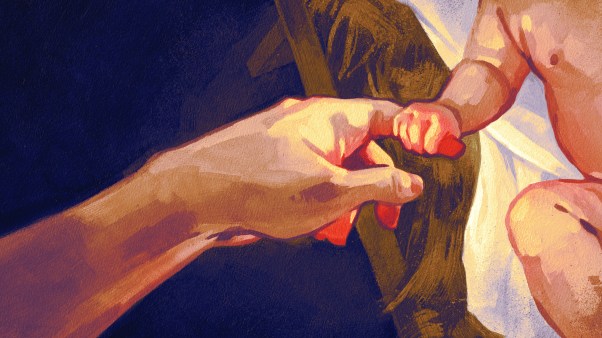Let’s say you attended Wheaton College, Gordon College, or Biola University. Or perhaps you’re an outsider who just thinks highly of those schools. If so, you might be turned off by a book that groups them together under the label “Fundamentalist U.” Don’t be.
Adam Laats, professor of education and history at Binghamton University and author of Fundamentalist U: Keeping the Faith in American Higher Education, knows the difference between an evangelical and a fundamentalist. He knows, too, that it can be very hard to tell that difference, especially before the 1970s. Using the example of Wheaton, Gordon, and Biola (along with Moody Bible Institute, Bob Jones University, and Liberty University), Laats attempts to identify the distinct nature of non-denominational, fundamentalist-evangelical higher education in the 20th century. And he succeeds admirably.
Peculiarities of Definition
Fundamentalist and evangelical colleges have long grappled with many of the same issues faced by other institutions of higher education: the early 20th-century academic revolution, changing standards of accreditation, a post–World War II boom in enrollment fueled by the GI Bill, the moral upheaval of the turbulent 1960s, and the rise of campus protests.
But fundamentalist-evangelical higher education has also dealt with a distinct set of challenges: how to train missionaries, how to maintain codes of student conduct in keeping with fundamentalist mores, whether (or how) to remain true to dispensational premillennialism, how to maintain doctrinal purity, and how to quash leftist radicalism in favor of traditional and conservative Americanism. As Laats observes, “[Fundamentalist colleges] expected to do all the things that modern universities did without signing on to the fundamental intellectual presuppositions that had dictated those changes in modern university life.” In explaining how this struggle played out, Laats helps us better understand both Christian higher education and the historic relationship between fundamentalism and evangelicalism.
All the schools Laats studies identified themselves as fundamentalist in the 1920s and ’30s, and all are denominationally independent to this day. This means they lacked a larger institutional guide to define their parameters and check any move away from their fundamentalist identity. Writing as a sympathetic outsider, Laats makes a compelling case that the spectrum of Christian colleges we see today, ranging from the militantly fundamentalist Bob Jones University to the neo-evangelical Wheaton, did not exist until the 1960s.
To cite but one example, Wheaton forbade drama productions until late in that decade, while Shakespearean plays have been central at Bob Jones University since the school’s inception. One might write this off as something peculiar to Bob Jones—but the peculiarities are part of Laats’s point. As he puts it, “In every case these idiosyncrasies of the 1920s continued to inform fundamentalism at its leading colleges and universities.” With fundamentalism subject to such a fluid range of definitions, controversies often centered on the question of authority. In other words, who gets to define fundamentalism for the college? Is it the board, the president, the faculty, or the students (certainly not, unless you ask them)? This was not shared governance but something akin to WrestleMania.
Evangelicalism Emerges
Fundamentalist U covers all the expected controversies—evolution, dispensationalism, biblical inerrancy, gender, race, and the like. But don’t think this book focuses only on those.
Laats’s pre-1960s chapters address the difficulty of maintaining codes of student conduct, especially on dating but also on student attire, revealing how fundamentalism sometimes prided itself on being exactly one generation behind whatever was fashionable at the moment. Moody in the 1950s, for example, grappled with the timeless question of whether students should be allowed to go to the roller derby.
At colleges that kept the sexes mostly separate, like Bob Jones, mail call became “male call” because it was one of the few times women and men could spend time together relatively unsupervised. At Wheaton, a male and female could attend a sporting event together without raising eyebrows, but going to chapel in tandem signaled they were engaged. To the extent that campus rules were intended to maintain sexual purity, they too were raised to the level of biblical imperative, further complicating the definition of true fundamentalism. (Is a college going liberal if it allows women to wear slacks?) As Laats writes, “At fundamentalist schools, indeed, rigid lifestyle rules and energetic enforcement of those rules often came to be taken [as] a central defining element of fundamentalism itself.”
In the 1960s, these campuses were torn by protest and controversy, but less over the Vietnam War than between students who supported the drive for fundamentalist purity and those who wanted the constraints lifted. The competition was fierce, and fundamentalist schools could never be sure whether loosening or tightening standards would give them an edge in recruiting.
As the book arrives at the rise of the neo-evangelicalism associated with Billy Graham, Christianity Today, and Fuller Seminary in the 1950s, we start to see our current spectrum of colleges come into play, if only gradually. Laats lays this out most thoroughly in chapter 5, “Billy Graham Was a Transfer Student,” and what he aptly terms the fundamentalist-evangelical “family feud” shapes the rest of the book. Neo-evangelical influences showed up intensely at Wheaton, slightly less intensely at Gordon, and to a lesser (and later) extent at Biola and Moody. Bob Jones, by contrast, broke decisively with Graham and his movement.
For the rest of the book, Bob Jones and Wheaton serve as the fundamentalist and neo-evangelical poles between which the other schools stake out their place. Still, Wheaton’s neo-evangelical identity didn’t fully emerge until the 1970s. In the 1960s, Wheaton had alumni who demanded that the college continue trumpeting its fundamentalism, while students and younger faculty made a habit of denouncing stuffy, stodgy, militant separatism. This left administrators with a tricky balancing act—trying to maintain some semblance of academic freedom and educational legitimacy while keeping the donations, tuition dollars, and children of fundamentalist alumni rolling and enrolling.
The book reminds us how hard it is to identify the precise difference between fundamentalism and evangelicalism, given how rooted both are in the fundamentalist-modernist controversies of the Roaring Twenties. As Laats writes, “In every case, the durable ambiguities about the definition of fundamentalism laid down in the 1920s made every question subject to endless evangelical debate.” This astute statement harkens back to Laats’s 2010 book Fundamentalism and Education in the Scopes Trial Era: God, Darwin, and the Roots of America’s Culture Wars, where he argues that the negative caricature of fundamentalism that emerged from the Scopes Trial split the movement—or at least created two competing definitions of fundamentalism.
And as Fundamentalist U makes clear, the fundamentalist-evangelical balancing act was never more fraught than on the subject of the Scopes Trial—evolution. As in other chapters, Wheaton is at the center. The neo-evangelical tendency to engage with mainstream science led to the rise of “progressive creation,” an attempt to accommodate evolution while maintaining fidelity to a literal interpretation of Genesis. A tall challenge became a near impossibility when most of the evangelical world turned decisively to Young Earth creation science. In other words, at the very moment when the neo-evangelical push toward re-engagement with culture (and science) might have gone one way, fundamentalism went the other.
An Uneven Record on Race
In the most disheartening chapter of Fundamentalist U, we see how Bob Jones raised racism to the level of theological necessity. As Laats shows, by 1971 the school had settled on a perverse line of logic: Admitting black students raised the prospect of one of them dating or marrying a white student. But this would violate fundamentalist theology and require the black student’s expulsion. And expelling a black student during “the present agitation and left-wing pressures,” as Bob Jones III characterized that era, would be viewed as racist. “In other words,” as Laats sums up the school’s reasoning, “to avoid charges of racism, Bob Jones University would not admit African American students.”
Other Christian colleges typically agonized over how to address racism without rocking the boat or giving the impression of siding with the “lawbreakers” of the civil rights movement. Faculty and students who saw racism as a systemic problem requiring an institutional response were met at every turn by the insistence that individual conversion was the only answer—yet another example of evangelicalism’s uneven record on race.
Overall, Fundamentalist U is an exhaustively researched and well-written book, even when it dwells on episodes we might prefer to forget. One could quibble here and there, but Laats has made a solid contribution to our understanding of both higher education and American Christianity. And, as an added bonus, anyone who attended an evangelical or fundamentalist college and survived with a sense of humor intact should find much to enjoy.
Barry Hankins teaches history at Baylor University. His books include Francis Schaeffer and the Shaping of Evangelical America (Eerdmans) and Uneasy in Babylon: Southern Baptist Conservative and American Culture (University of Alabama Press).










